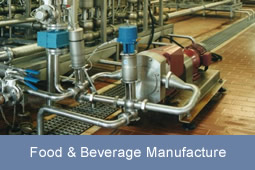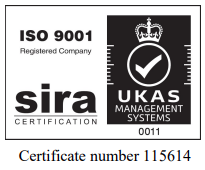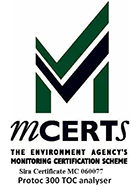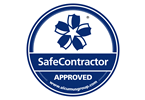Nitrite may be determined using on-line instrumentation or by using portable/laboratory meters. It is typically determined using UV spectral analysis which would simultaneously report the nitrate concentration. Continual on-line nitrite measurement may be performed as part of a total nitrogen balance for waste-water monitoring and control or for compliance of drinking water.
Nitrate and nitrite are naturally occurring ions that are part of the nitrogen cycle. The nitrate ion (NO3⁻) is the stable form of combined nitrogen for oxygenated systems. Although chemically unreactive, it can be reduced by microbial action. The nitrite ion (NO2⁻) contains nitrogen in a relatively unstable oxidation state. Chemical and biological processes can further reduce nitrite to various compounds or oxidize it to nitrate. Understanding the nitrogen balance is therefore important in waste water treatment processes.
Environmental monitoring of nitrate and nitrite is also becoming increasingly important to understand how agricultural activity may impact the ecosystem. The primary source of water-soluble nitrate and nitrite compounds is through the application of inorganic fertilisers. Contamination can enter the ecosystem either through surface water runoff in to rivers or the sub-surface percolation into aquifers. This also then potentially impacts drinking water quality.
The World Health Organisation (WHO) has issued guidelines on safe concentrations of nitrate and nitrite compounds in water for human use that are based on the absence of specific short-term health effects (methemoglobinemia and thyroid effects).
The nitrate concentration in surface water is typically below 20mg/L NO3 but can be elevated in agricultural regions above 50mg/L N03 (the prescribed concentration as set by the Drinking Water Directive). Since the nitrite ion (NO2⁻) is relatively unstable it is typically in much lower concentration.
However, processes such as Chloramination may give rise to the formation of nitrite within the distribution system. Nitrification in distribution systems can increase nitrite levels, usually by 0.2–1.5 mg/l of nitrite, but concentrations towards 3 mg/l of nitrite have been reported at the extremities.
The TriOS OPUS probe technology uses UV spectral analysis to define the nitrite and nitrate concentrations. The optical sensor may be mounted directly into the basin or in to a small tank receiving a pumped supply. Automatic compressed air cleaning may be integrated to maintain the optical windows from fouling, improve measurement reliability and reduce maintenance.














